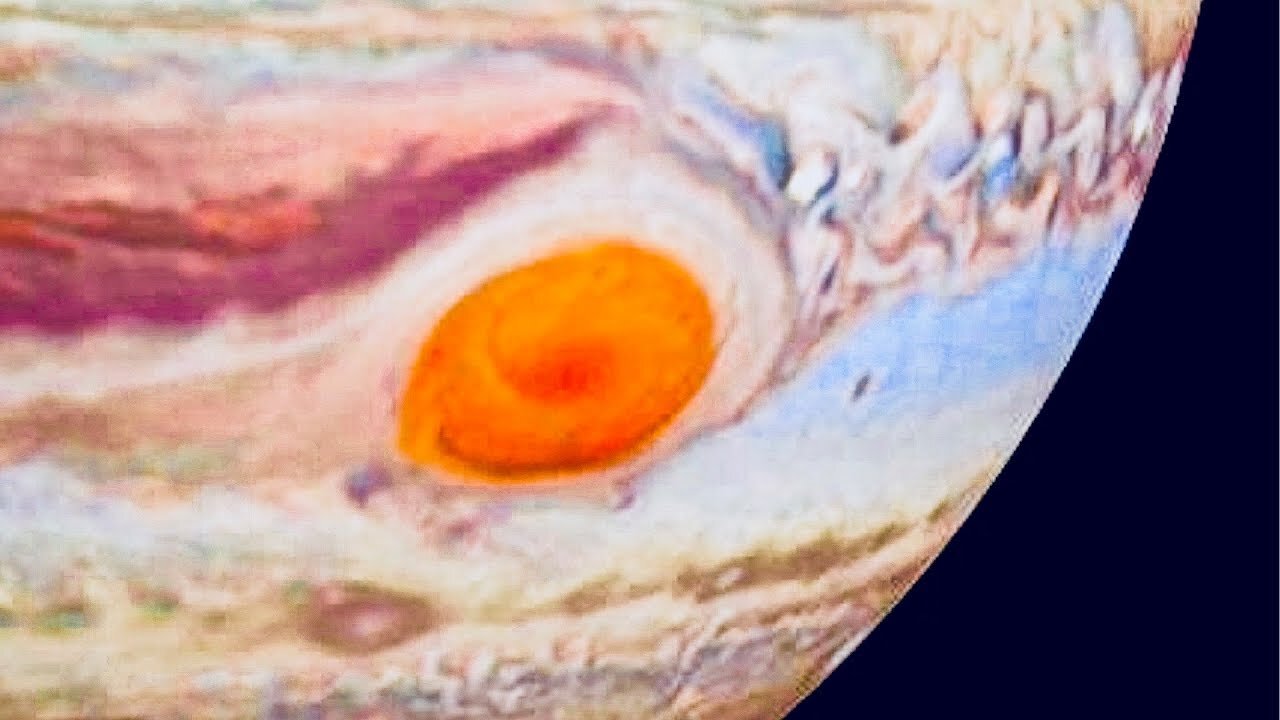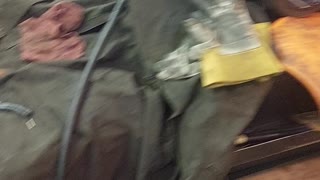Premium Only Content

Inside Jupiter's Giant Red Spot - Fascinating NASA Flight Simulation Animation
Jupiter’s Great Red Spot: A Swirling Mystery - Jupiter’s most iconic feature is its Great Red Spot. A gigantic storm twice as big as Earth, the spot was first observed 300 years ago – and may have been churning long before that. Like a hurricane on Earth, the center is relatively calm, but farther out, the winds scream at 430 to 680 kilometers per hour (270 to 425 miles per hour).
The largest and most powerful hurricanes ever recorded on Earth spanned over 1,000 miles across with winds gusting up to around 200 mph. That’s wide enough to stretch across nearly all U.S. states east of Texas. But even that kind of storm is dwarfed by the Great Red Spot, a gigantic storm in Jupiter. There, gigantic means twice as wide as Earth.
With tumultuous winds peaking at about 400 mph, the Great Red Spot has been swirling wildly over Jupiter’s skies for the past 150 years—maybe even much longer than that. While people saw a big spot in Jupiter as early as they started stargazing through telescopes in the 1600s, it is still unclear whether they were looking at a different storm. Today, scientists know the Great Red Spot is there and it’s been there for a while, but they still struggle to learn what causes its swirl of reddish hues.
Understanding the Great Red Spot is not easy, and it’s mostly Jupiter’s fault. A planet a thousand times as big as Earth, Jupiter consists mostly of gas. A liquid ocean of hydrogen surrounds its core, and the atmosphere consists mostly of hydrogen and helium. That translates into no solid ground like we have on Earth to weaken storms. Also, Jupiter’s clouds obstruct clear observations of its lower atmosphere. While some studies of Jupiter have investigated areas in its lower atmosphere, orbiting probes and telescopes studying the Great Red Spot can only see clouds scattered high in the atmosphere.
Amy Simon, an expert in planetary atmospheres at NASA’s Goddard Space Flight Center in Greenbelt, Maryland, said learning more about Jupiter and its Great Red Spot could help scientists understand Earth’s weather system better. Jupiter’s weather functions under the same physics as Earth, she said, just millions of miles farther from the sun. Simon also said Jupiter studies could improve our understandings of worlds beyond our solar system. “If you just look at reflected light from an extrasolar planet, you’re not going to be able to tell what it’s made of,” Simon said. “Looking at as many possible different cases in our own solar system could enable us to then apply that knowledge to extrasolar planets.”
Studies predict Jupiter’s upper atmosphere has clouds consisting of ammonia, ammonium hydrosulfide, and water. Still, scientists don’t know exactly how or even whether these chemicals react to give colors like those in the Great Red Spot. Plus, these compounds make up only a small part of the atmosphere. “We’re talking about something that only makes up a really tiny portion of the atmosphere,” Simon said. “That’s what makes it so hard to figure out exactly what makes the colors that we see.”
Like Simon, other scientists at Goddard work to shed light on the Great Red Spot’s mystery. Goddard scientists Mark Loeffler and Reggie Hudson have been performing laboratory studies to investigate whether cosmic rays, one type of radiation that strikes Jupiter’s clouds, can chemically alter ammonium hydrosulfide to produce new compounds that could explain the spot’s color.
Ammonium hydrosulfide is unstable under Earth’s atmospheric conditions, so Loeffler makes his own batch by heating hydrogen sulfide and ammonia together. He then blasts them with charged particles, similar to the cosmic rays impacting Jupiter’s clouds. “Our first step is to try to identify what forms when ammonium hydrosulfide is irradiated,” Loeffler said. “We have recently finished identifying these new products, and now we are trying to correlate what we have learned with the colors in Jupiter. ”
Other experts agree with the leading theory that deep under Jupiter’s clouds, a colorless ammonium hydrosulfide layer could be reacting with cosmic rays or UV radiation from the sun. But Simon said many chemicals turn red under different situations. “That’s the problem,” she said. “Is it turning the right color red?” Under the right conditions, ammonium hydrosulfide might be.
With the Great Red Spot and other reddish parts of Jupiter, coloring may result from multiple factors, as opposed to just ammonium hydrosulfide. “Ideally, what you’d want is a mixture with the right components of everything that you see in Jupiter’s atmosphere at the right temperature, and then irradiate it at the right levels,” Simon said.
Music: Here Today Gone Tomorrow by Dhruva Aliman
Amazon- https://amzn.to/3dgKA52
https://music.apple.com/us/artist/dhruva-aliman/363563637
https://dhruvaaliman.bandcamp.com/album/hard-to-get-along
http://www.dhruvaaliman.com/
Spotify - https://open.spotify.com/artist/5XiFCr9iBKE6Cupltgnlet
-
 52:51
52:51
Seeker Land
6 days agoMystery of the Ancient Druids - Lost Celtic Mystics - Full Documentary
1261 -
 0:14
0:14
Amazing Story
3 years ago $0.13 earnedFlight inside view.
116 -
 1:11
1:11
BillytheMachinist86
3 years agoSpot welding oil pits inside bore
15 -
 0:35
0:35
Land Shark - Motovlogs & More
3 years agoSpace Shark Flight Test - Blender 2.93 - 3d Animation
911 -
 10:31:05
10:31:05
Dr Disrespect
13 hours ago🔴LIVE - DR DISRESPECT - PGA TOUR 2K25 LAUNCH DAY
178K27 -
 2:30:04
2:30:04
Laura Loomer
4 hours agoEP105: MISSING: The Epstein Files
47.1K12 -
 1:46:14
1:46:14
Kim Iversen
5 hours agoTrump to Zelenskyy: 'You're Gambling with World War III'
58.6K99 -
 55:28
55:28
Glenn Greenwald
7 hours agoGlenn Reacts to Trump-Zelensky Exchange and Takes Q&A from our Members | SYSTEM UPDATE #415
101K185 -
 4:26:54
4:26:54
Nerdrotic
9 hours ago $29.33 earnedMarvel PANIC MODE! Kathleen Kennedy GONE?! Hollywood DEI Dead | Friday Night Tights 342 Nick Freitas
118K32 -
 1:30:03
1:30:03
Flyover Conservatives
23 hours agoZelensky Fail... God Called IT!; From Prison to the White House: Angela Stanton King’s Unbelievable Redemption Story | FOC Show
39.6K6